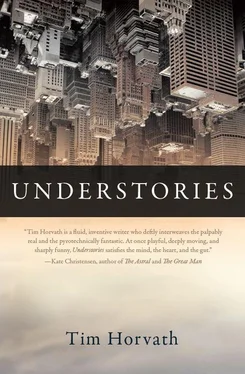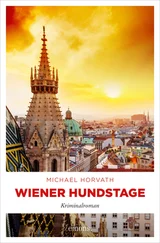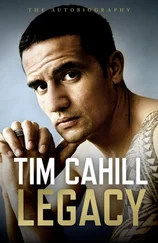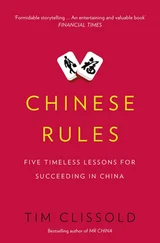“No movie today on the syllabus,” they inform me.
“We’re switching things around a little bit,” I announce, fumbling to get the DVD in the tray. He Walked by Night appears on the screen, and I let the film do its work, just this once sans hand wringing about reducing myself to mere projectionist. I find a seat in the back, look on numbly. The plot is trivial, boilerplate police procedural, so I (and the students) can focus on the shadow elements. A deranged killer lurks in the sewers beneath L.A. There will be much to talk about. How blinds, noir’s signature emblem, are magnified, splayed over walls and ceilings and clothing. How the black-and-white universe of the film itself dictates that shadows are more substantial than nonshadows, the latter appearing ethereal, impalpable. But I can’t focus.

Edmund Evans was a product of that flat America where the land reaches out like canvas under tension and the shadows stretch correspondingly — sparse, stark. I met him at some undergrad research forum, where he was going a mile a minute about some economic correlation he’d graphed up on a poster. His leg bore a giant cast, but he was up there on his feet and he swung his crutch like a pointer, explicating away to anyone who’d listen. I heard out his spiel and asked some question to show I’d been paying attention, and then I extended a hand, which he seized after awkwardly repositioning the crutch.
“Umbr ol ogy?” he said, squinting. “No, I can’t say I know what that is.” In the next instant, he did something I’d never seen before: he guessed it. “Score one for Dublassi. AP Latin,” he said, shaking his head. And in that single etymological grab was adumbrated a path, a future. He’d been set to transfer to another school for business, had already sent in his application. But what, he wanted to know, was this all about, and I could see hunger fleshing out into his face, his eyes, hunger after something that couldn’t be found in any of his graphs or his econ textbooks, soon to be doorstops. His face let me know that right then he’d follow me anywhere.

For each of us, of course, the shadow we fell for first. Reaching for our second or third drink at our annual conference’s cocktail party, we kick off shoes under the chandelier, bask in the presence of the like-minded. Warily at first and then more boldly, we tell our stories:
— Regaining consciousness, the first thing that entered our field of vision was the shadow line of the very fence we came tumbling off, merciful as a missionary nun, leaning over us.
— The show Mystery Science Theater , with its silhouetted peanut gallery, sent us into spasms of laughter time and time again.
— In Arizona’s Black Rock Canyon, hiking with a friend, we lost our way, and, thinking this was it, curled up in the slight shadow vestibule formed by the banks of a dried arroyo, conserving ourselves till awakened by the sound of the single-propeller and, without waiting for visual confirmation, stood out of the gulch and started to whip broad circles in the air with the shirts we’d already taken off.
— With our dad, we heard the crackle of Lamont Cranston announcing, “The Shadow knows,” about to abort some foul play or nab some perpetrator. And we wanted to know, too, whatever there was to know, even without knowing what this might be.
Less dramatic beneath the sui generis sprawls the universal, submerged somewhere in the collective unconscious. Who didn’t skip beside his shadow, marveling at it as an emperor might his lands or a peasant his erection, this view of the augmented self offering up just a whiff of omnipotence? But just when we thought it gave us boundless control, our shadow evaded us, hiding itself inside another or going its own way (priming us early for love)? Like any boy or girl, I chased mine up and down hills and on sunbaked pavement till I came tumbling, breathless, to my knees.

In truth, it began for me in a garden, a stolen kiss and hot breath in the ear, a sundial with a gnomon of regal brass, angled amid peonies and shrubs. I stood on tiptoes, arching my neck to catch a glimpse of the face, rimmed with mystery symbols, no number system I knew of. Just behind me stood the girl I’d been told all week was my cousin but who, I’d learned earlier that day, wasn’t — it had just been a figure of speech — and this discovery set free the pangs that resigned to their unrealizability, I’d stifled all week long. Now I could look unflinching into her pale seaweed eyes (brine on the palate), and even study the two faint bumps in her plain white T-shirt, partly shrouded where the shadow fell.
Maybe I already knew what a sundial was; maybe she explained it to me; maybe some adult came along to edify us. Who knows; these things are as lost as her name. I was nine and we were left alone, the two of us, while They toured the mansion with Some Period of Furniture that held some fascination for them, and as I swung around, her lips caught mine in the chill of the shadow. Would I ever recover? Is it too transparent that a lifelong love affair (with shadow, not her) begins here? Or simply unfathomable in this age that any love would last a lifetime, even one whose only constant is the peripheral figure?

What an obscure, tenebrous bunch we are. I’ve been relieved to find I am talking to a bryologist (scholar of mosses and lichens). I shake my head in time with the bluesy lament of the reprographer (connoisseur of copies and copying). I once skipped a return flight to spend the night with a woman who declared herself a pyrologist instead of merely a “chemist who studies fire” (and her brown hair indeed went embery in the dark).
At least the dictionary affirms that these exist. Others, more fledgling, more marginal, persist solely by the curatorial zeal of their adherents. I half-pity the neologist (novelty and newness across the board) and the spontanographer (doodles, sketches, and scribbles) — academia’s stooges, her warthogs, creatures who persist because nature is decidedly not beautiful, who operate under some inner need, nuzzling up against anything that doesn’t run away screaming.

Here are some tips if you are planning to apply to one of the five degree-conferring graduate programs in umbrology in the United States. Don’t make any jokes pertaining to how you’ve always had a shadow. It’s akin to writing you’ve always had teeth on your dental school application — simply beyond the pale.
Second, do your homework. Out of the five programs, two are primarily devoted to shadow theater, leaving three for strictly scientific study. In their defense, one of the theater programs is highly interdisciplinary, and they incorporate scientific principles into what they do. One, though (petrified of getting embroiled in another lawsuit, I won’t name names), finds science anathema. They seem to think the shadow world ought to be kept as mysterious as possible, as ludicrous and untenable a position as that is in this era. Now — when we can explore the stars, sunspots and eclipses and shadow images on other worlds, those that asteroids lend one another as they hurtle through space, the six-thousand-mile-thick shadow that Saturn’s razor ring casts on the planet’s surface; now, when Lew Dorris can sit beside intelligence officials poring over satellite maps of Tora Bora, distinguishing cave from cliff, searching for the slightest hint of human presence — how can they believe such a thing now, of all times?
Читать дальше













